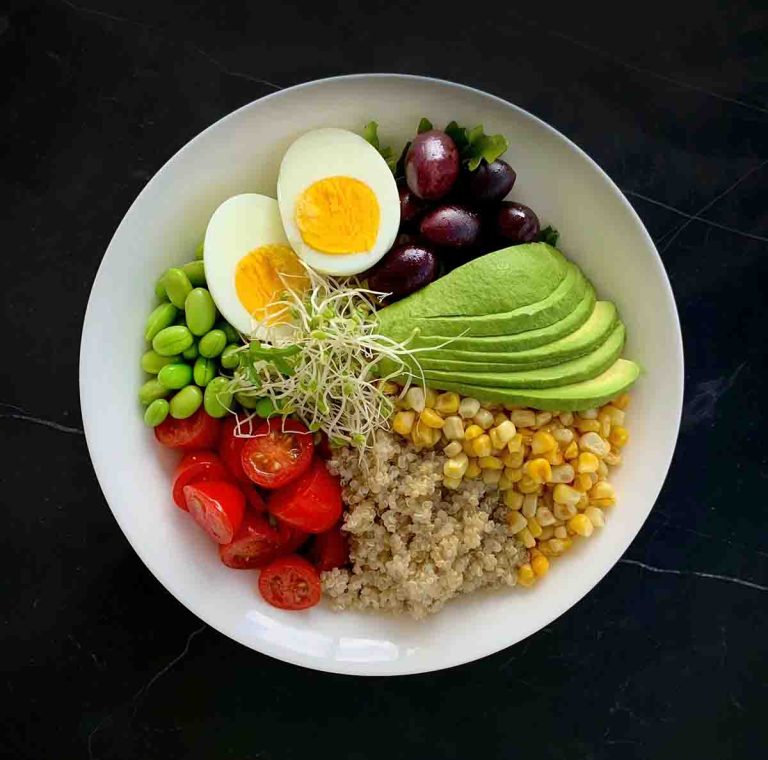How to Fix Brittle Hair with this Healthy Hair Care Routine for Strong, Shiny Hair.
Stop fighting brittle strands—discover the simple hair care routine that brings back strength and shine.
If your hair feels more like straw than silk, you’re not alone. Brittle, lifeless strands that snap when you brush them or refuse to hold a style can be frustrating—especially when you’ve tried countless products without seeing results. Here’s the thing: truly transforming your hair isn’t about finding one miracle product. It’s about understanding what your hair actually needs and building habits that work from the inside out. The good news? With a few strategic changes to your hair care routine, achieving strong, healthy hair is entirely possible.
Why Hair Becomes Brittle (Hair Health Basics)
Hair becomes brittle when it loses its ability to retain moisture. Your hair shaft is protected by an outer layer called the cuticle—when this protective layer is damaged or worn down, moisture escapes and your hair becomes dry, weak, and prone to breakage.
Several factors contribute to this moisture loss. Dehydration plays a bigger role than most people realize—when your body lacks adequate water, your hair follicles receive less nourishment, resulting in weaker, drier strands. Environmental exposure to sun, wind, and dry climates can deplete moisture from the outside. Chemical treatments like coloring, bleaching, and relaxers compromise the cuticle structure, making it harder for hair to hold onto hydration. Excessive heat styling strips moisture rapidly, while overwashing removes the natural oils that keep hair protected. Even the mineral content in your water supply can create buildup that prevents moisture from penetrating your strands.
References:
Cleveland Clinic: Hair Follicle: Function, Structure & Associated Conditions
The Independent Pharmacy: Dehydration and Hair Health: How It Impacts Your Hair
The path from brittle to bouncy requires addressing these issues systematically. Let’s explore the most effective ways to restore your hair’s health and vitality.
Hydration and Hair Health: The Foundation You’re Probably Missing
Before you invest in another expensive treatment, consider this: your hair’s health begins with adequate hydration from within. Hair follicles, like every other part of your body, rely on proper hydration to function optimally. When you’re consistently dehydrated, your body prioritizes vital organs, and your hair receives whatever is left over—which often isn’t much.
According to hair health experts, drinking adequate water supports healthy hair growth by ensuring that essential nutrients reach your hair follicles through your bloodstream. While individual needs vary based on activity level, climate, and body size, most adults benefit from approximately eight glasses of water daily. However, the quality of your water matters too. Mineral-rich water that contains naturally occurring calcium, magnesium, and other trace minerals can provide additional benefits that support overall wellness, including hair health.
Some people find that sparkling mineral water makes it easier to meet their daily hydration goals—the pleasant carbonation can encourage more frequent sipping throughout the day. Whether you prefer still or sparkling, consistency matters more than the specific type you choose.
References:
Theradome: Does Drinking Water Help Hair Growth?: Role of Hydration
Parade: Can Dehydration Impact Hair Loss? Dermatologists Explain
DiStefano Hair Restoration Center: Does Dehydration Cause Hair Loss?
Signs you may not be drinking enough include persistent dryness despite using moisturizing products, increased hair shedding, slow growth, and a tight or flaky scalp. If your hair feels brittle despite external treatments, your hydration habits may be the missing piece.
Pro tip: Keep a water bottle at your desk and set reminders on your phone if you frequently forget to drink throughout the day. Your hair (and your body) will thank you.
Your Washing Routine Is Make-or-Break
How you wash your hair can be just as important as what you wash it with. Overwashing is one of the most common mistakes people make when dealing with brittle hair. Shampooing too frequently strips your scalp of sebum—the natural oil that travels down your hair shaft to protect and moisturize each strand. For most hair types, washing two to three times per week is sufficient. Those with very curly or coily hair may benefit from even less frequent washing.
References:
Cleveland Clinic: How Often Should You Really Wash Your Hair?
PMC: The Impact of Shampoo Wash Frequency on Scalp and Hair Conditions
Water temperature matters more than you might think. While hot showers feel relaxing, excessively hot water opens the hair cuticle and allows moisture to escape. Dermatologists recommend washing hair with lukewarm water and finishing with a cool rinse to seal the cuticle and lock in conditioning benefits. This simple adjustment can significantly improve moisture retention and add natural shine.
References:
Clinikally: Can Hot Water Damage Your Hair? Understanding the Effects on Hair Health
Theradome: Does Hot Water Cause Hair Loss?
Cosmetic World: What’s the Best Temperature to Wash Your Hair In?
Product buildup creates another barrier to healthy hair. When styling products, hard water minerals, and even some conditioning agents accumulate on your hair, they form a coating that prevents moisture from penetrating. Consider using a clarifying treatment once every two to four weeks to remove buildup—but follow immediately with a deep conditioning treatment since clarifying products can be drying.
The way you handle wet hair also impacts brittleness. Hair is most vulnerable when wet, so avoid aggressive towel-drying or brushing immediately after washing. Instead, gently squeeze excess water with a soft towel or microfiber cloth, then use a wide-tooth comb to detangle starting from the ends and working upward.
Your scalp health directly influences your hair’s condition. A dry, irritated scalp produces less sebum and can contribute to brittle hair. Massage your scalp gently while shampooing to stimulate circulation, which helps deliver nutrients to hair follicles. If you notice persistent dryness or flaking, you may need to adjust your product choices or washing frequency.
Reference:
VEGAMOUR: Not Just For Skin: Why Moisture and Hydration Are Important for Your Hair
Protection: Shield Your Hair Daily
Even with perfect hydration and washing habits, your hair faces daily threats that can undermine your efforts. Heat styling is one of the biggest culprits—flat irons, curling tools, and blow dryers can reach temperatures high enough to literally boil the water inside your hair shaft, causing severe damage to the cuticle. If you must use heat tools, always apply a heat protectant product first and use the lowest effective temperature setting. Better yet, embrace air-dried styles whenever possible and save heat styling for special occasions.
References:
PMC: Hair Shaft Damage from Heat and Drying Time of Hair Dryer
PubMed: Effects of heat treatment on hair structure
PMC: Establishment of Heat‐Damaged Model for Hair
Environmental protection deserves more attention than it typically receives. UV rays don’t just damage your skin—prolonged sun exposure can degrade hair proteins and fade color. When spending extended time outdoors, wear a hat or apply a UV-protecting hair product. Chlorine from swimming pools and salt from ocean water both have drying effects that can worsen brittleness. Wet your hair with clean water before swimming so it absorbs less chlorinated or salt water, and rinse thoroughly immediately after.
Hard water presents a particular challenge in many areas. The high mineral content can leave deposits on your hair that make it feel rough and look dull. If you suspect hard water is contributing to your hair problems, consider installing a shower filter or using a chelating shampoo periodically to remove mineral buildup.
Nighttime protection is an often-overlooked opportunity to prevent damage. Tossing and turning on cotton pillowcases creates friction that can rough up your hair cuticle and lead to breakage. Switching to a silk or satin pillowcase reduces this friction significantly—the smooth fabric allows your hair to glide rather than catch. Alternatively, wrap your hair in a silk scarf or wear a satin bonnet to bed. Those with longer hair might benefit from loosely braiding it before sleep to minimize tangling.
References:
Washington Post: Silk pillowcases may provide some hair and skin benefits, but they’re not miracle workers
Good Housekeeping: 10 Silk Pillowcase Benefits for Skin and Hair, According to Dermatologists
Pro tip: If you’re working to repair particularly damaged hair, try applying a small amount of hair oil to your ends before bed. The overnight treatment gives the product plenty of time to penetrate without weighing down your style during the day.
Nutrition and Your Hair’s Building Blocks
What you eat profoundly impacts your hair’s structure and resilience. Hair is primarily made of a protein called keratin, so inadequate protein intake can result in weak, brittle strands. Include quality protein sources like fish, eggs, lean meats, legumes, and nuts in your regular diet. For those following plant-based diets, combining complementary proteins ensures you get all essential amino acids.
Certain nutrients play particularly important roles in hair health. Biotin (vitamin B7) supports keratin production, though true deficiency is relatively rare. Omega-3 fatty acids help keep hair hydrated from within—find them in fatty fish, walnuts, flaxseeds, and chia seeds. Iron deficiency can lead to hair loss and brittleness, particularly in women. Vitamin E provides antioxidant protection, while vitamin D supports follicle health. Zinc aids in hair tissue growth and repair.
References:
PMC: A Review of the Use of Biotin for Hair Loss
Cleveland Clinic: Does Biotin Really Work for Hair Growth?
Cleveland Clinic: Best Vitamins & Supplements for Hair Growth
ISHRS: Guide to Best Vitamins and Minerals for Hair Growth
Chris Kresser: Nutrition for Healthy Skin: Omega-3 Fatty Acids, Biotin, and Sulfur
The connection between overall hydration and nutrient delivery is worth emphasizing again here. Even if you’re consuming adequate nutrients, chronic dehydration can limit how effectively those nutrients reach your hair follicles. Think of proper hydration as the transportation system that delivers all those beneficial vitamins and minerals where they need to go.
Be patient when making dietary changes—unlike skin, which can show improvements relatively quickly, hair grows slowly. Any new hair growth benefiting from improved nutrition will emerge from your scalp at a rate of roughly half an inch per month. This means it may take three to six months before you notice significant changes in your hair’s overall quality. Consistency matters more than perfection, so focus on gradual, sustainable improvements to your eating habits rather than dramatic overhauls that are difficult to maintain.
Making It Stick
Transforming brittle hair into bouncy, healthy-looking strands doesn’t happen overnight, but it does happen with consistency. Rather than trying to implement every suggestion at once, start with the changes that feel most manageable for your lifestyle. Perhaps begin by improving your hydration habits and adjusting your washing routine, then gradually incorporate protective measures and dietary improvements.
Set realistic expectations about timing. You may notice your hair feeling softer and more manageable within a few weeks, but remember that significant transformation takes months as healthier new growth gradually replaces damaged length. This is normal and doesn’t mean your efforts aren’t working.
Everyone’s hair responds differently to the same approaches, so pay attention to what works for your specific hair type and needs. What transforms one person’s hair might have minimal impact on another’s. Be willing to experiment and adjust your routine as you learn more about what your hair responds to best.
The journey from brittle to bouncy is about building sustainable habits that support hair health and repair damaged hair from multiple angles. With patience and consistency, you’ll find that healthy, resilient hair is absolutely within reach.
Image credit: 1




